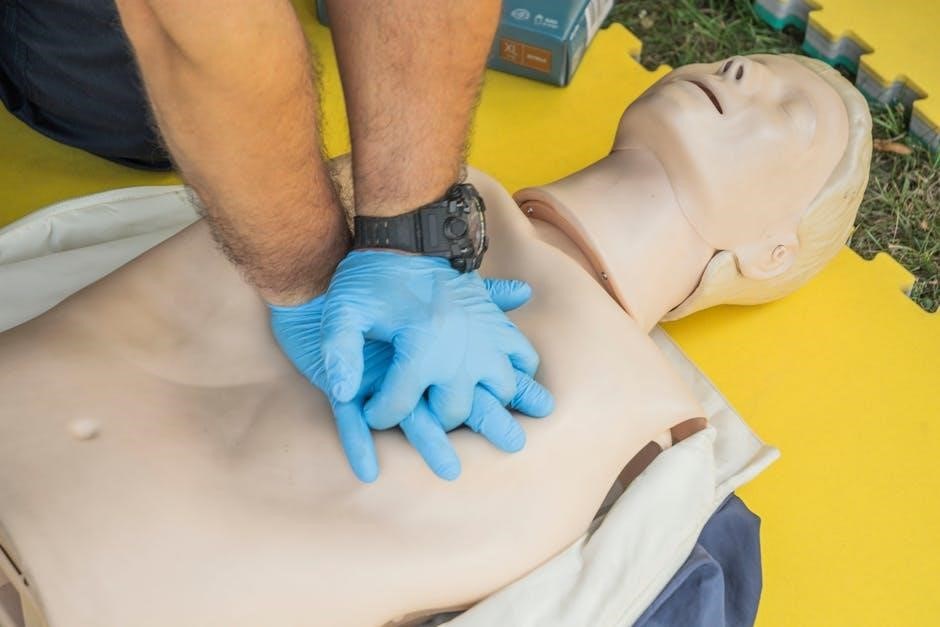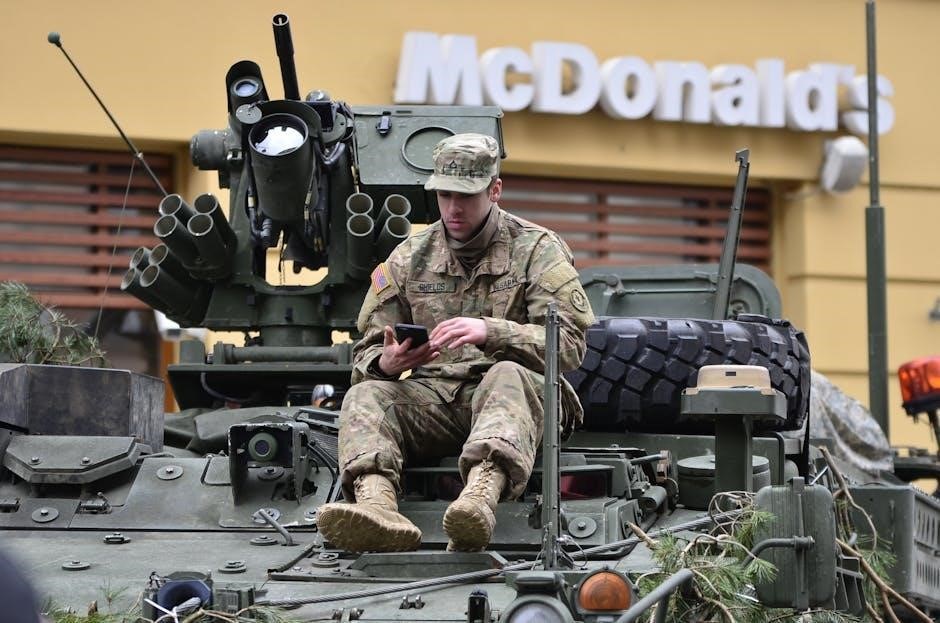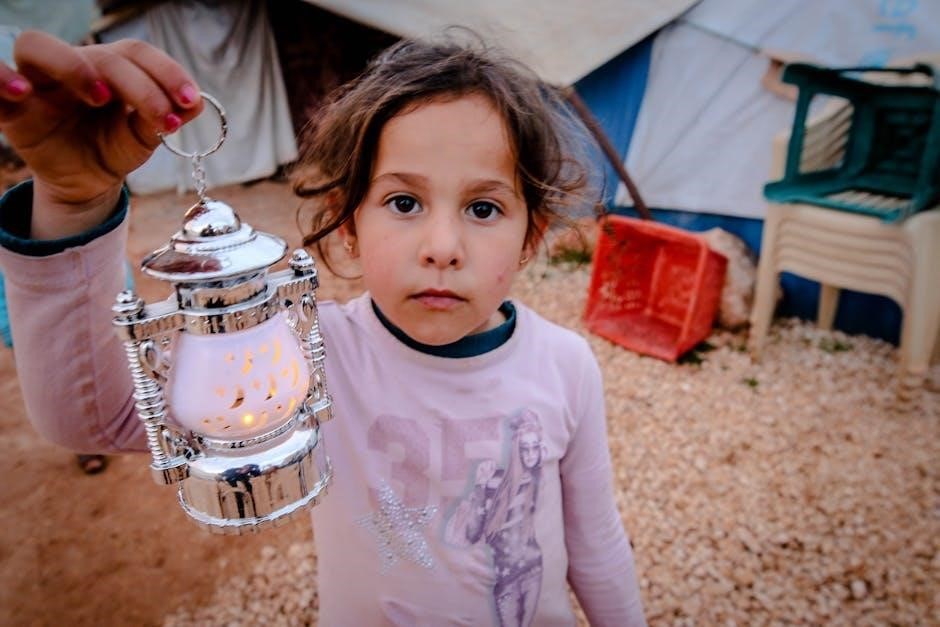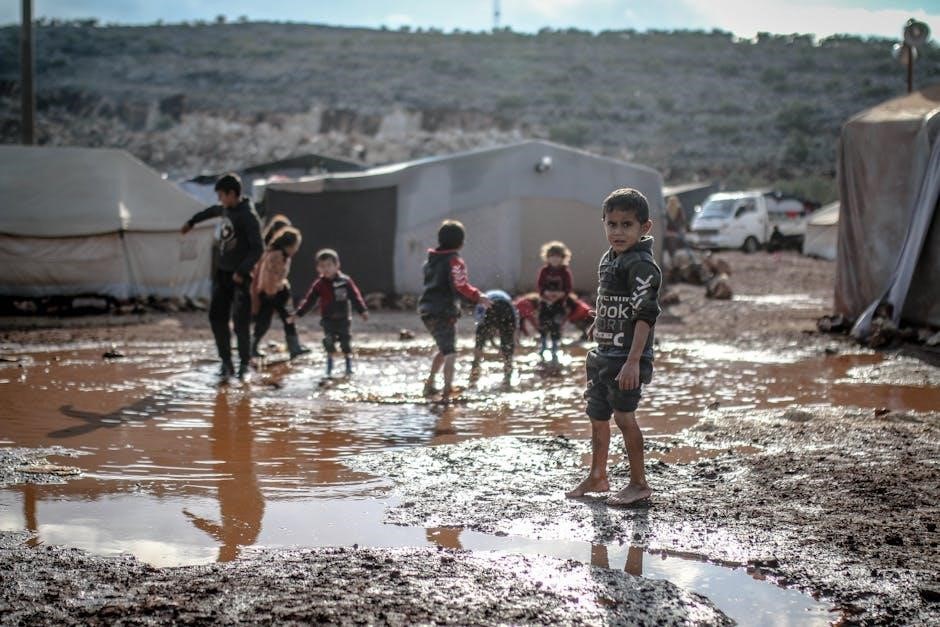the war that saved my life pdf
The War That Saved My Life, a novel by Kimberly Brubaker Bradley, is widely available in PDF format for free download on various platforms like FlipBuilder and PDFdrive․
1․1․ Background of the Novel
The War That Saved My Life, written by Kimberly Brubaker Bradley, is a heartrending historical fiction novel set during World War II․ The story revolves around Ada, a young girl with a clubfoot, and her brother Jamie, who are evacuated from London to the English countryside․ This relocation, part of the mass evacuation of children during the war, becomes a pivotal moment in their lives; The novel explores themes of resilience, hope, and identity, offering a powerful portrayal of survival and growth amidst adversity․ Published in 2015, the book has gained acclaim for its emotional depth and historical accuracy, providing readers with a vivid glimpse into life during wartime Britain․ The narrative not only highlights the challenges faced by those with disabilities but also underscores the transformative power of kindness and acceptance; The novel’s setting and themes are deeply rooted in the historical context of World War II, making it a compelling read for fans of historical fiction․

1․2․ Book Overview
The War That Saved My Life tells the story of Ada, a 10-year-old girl with a clubfoot, and her younger brother Jamie, who are evacuated from London to the countryside during World War II․ The novel, written by Kimberly Brubaker Bradley, follows their journey as they adapt to a new life away from the city and their abusive mother․ Ada, who has been confined due to her disability, discovers a sense of freedom and purpose in rural England․ The story explores themes of resilience, identity, and hope, as Ada and Jamie navigate the challenges of war and find unexpected kindness in their new home․ The book is celebrated for its vivid portrayal of life during WWII and its emotional depth, making it a compelling read for fans of historical fiction․ The PDF version of the novel is widely available for download, allowing readers to access this moving tale easily․

1․3․ Availability of “The War That Saved My Life” in PDF Format
The War That Saved My Life by Kimberly Brubaker Bradley is widely available in PDF format, making it accessible to readers worldwide․ The book can be downloaded for free from platforms like FlipBuilder and PDFdrive, where users can share and access the file without cost․ Additionally, the novel is available on the Internet Archive, which provides a digital library of free and borrowable books․ Readers can also find the PDF version on educational websites and forums dedicated to historical fiction․ Some platforms offer the option to read the book online directly, while others require downloading the file․ The availability of the PDF format ensures that this moving story of resilience and hope during World War II can be easily accessed and enjoyed by readers of all ages․ The book’s digital formats, including EPUB and Kindle versions, further enhance its accessibility for modern readers․

About the Author
Kimberly Brubaker Bradley, a Newbery Honor-winning author, is known for her powerful storytelling and emotional depth․ Her works, including The War That Saved My Life and Fighting Words, explore themes of resilience and hope, earning her critical acclaim and a dedicated readership․ Bradley’s writing often delves into historical contexts, such as World War II, and addresses complex social issues, making her a significant voice in contemporary children’s literature․ Her ability to craft relatable characters and compelling narratives has solidified her reputation as a masterful storyteller, resonating with readers of all ages․ Bradley’s contributions to literature have been recognized through prestigious awards, further highlighting her impact on the literary world․
2․1․ Kimberly Brubaker Bradley’s Biography
Kimberly Brubaker Bradley is a renowned American author, best known for her heartfelt and historically rich novels․ Born on June 24, 1967, in Fort Wayne, Indiana, Bradley developed a passion for storytelling early in life․ She pursued a degree in chemistry from Smith College but later transitioned to writing, drawn to the emotional depth of children’s literature․ Bradley’s personal experiences, including her marriage to a fellow writer and her role as a mother, have influenced her narratives, which often explore themes of family, resilience, and hope․ Her breakout novel, The War That Saved My Life, earned her a Newbery Honor and widespread acclaim․ Bradley’s ability to weave historical contexts, such as World War II, with deeply personal journeys has made her a beloved figure in contemporary literature, inspiring readers of all ages with her poignant and uplifting stories․

2․2․ Literary Style and Themes
Kimberly Brubaker Bradley’s literary style in The War That Saved My Life is marked by emotional depth, vivid imagery, and a compelling narrative voice․ Her writing is accessible yet powerful, making the novel resonate with readers of all ages․ Bradley masterfully weaves historical fiction with personal drama, creating a story that is both educational and emotionally engaging․ The novel explores themes of resilience, hope, and self-discovery, as the protagonist, Ada, navigates the challenges of World War II and her own physical disability․ Bradley’s ability to balance heavy themes with moments of tenderness and humor makes the book both moving and uplifting․ Her portrayal of characters like Ada, Jamie, and Susan highlights the strength of human relationships during times of crisis․ The novel’s focus on identity, abuse, and survival underscores Bradley’s commitment to addressing complex issues with sensitivity and authenticity, earning her widespread critical acclaim․

2․3․ Major Works and Awards
Kimberly Brubaker Bradley is a renowned author known for her compelling and emotionally charged novels․ Her major works include The War That Saved My Life, Jefferson’s Sons, and Fighting Words, all of which have garnered significant critical acclaim․ The War That Saved My Life earned her a Newbery Honor, a prestigious recognition in children’s literature․ Bradley’s writing often explores themes of resilience, identity, and survival, resonating deeply with readers․ Her ability to tackle difficult subjects, such as abuse and disability, with sensitivity and authenticity has earned her a reputation as a fearless and impactful storyteller․ Additionally, Bradley has been recognized as a #1 New York Times bestseller, further cementing her status as a leading voice in contemporary literature․ Her works are widely studied in schools and cherished by readers worldwide, making her one of the most celebrated authors of historical fiction for young audiences․
Plot Summary
During World War II, Ada and her brother Jamie escape London’s bombings, finding refuge in the countryside with a reclusive woman, Susan․ The story unfolds as Ada faces her past, discovers hope, and learns resilience․
3․1․ Setting of the Novel
The novel is set during World War II, primarily in London and the English countryside․ The story begins in a cramped, one-room apartment in London, where Ada and her brother Jamie live under oppressive conditions․ The city is plagued by bombings and fear, prompting the evacuation of children to safer areas․ The rural setting, where Ada and Jamie are relocated, offers a stark contrast to their urban life․ The countryside provides a sense of freedom and hope, though it also presents challenges as Ada and Jamie adapt to a new way of life․ The shift from the confined, abusive environment of London to the expansive, nurturing landscape of the countryside is central to the story’s themes of resilience and transformation․ The historical context of the war underscores the characters’ struggles and triumphs, making the setting a pivotal element in their journey․
3․2․ Main Characters
The novel revolves around three central characters whose lives are deeply intertwined by the events of World War II․ Ada, a ten-year-old girl with a club foot, is the protagonist whose journey of self-discovery and resilience drives the story․ Her physical disability and emotional scars from years of abuse by her mother make her a compelling and sympathetic character․ Jamie, Ada’s younger brother, is a source of love and support for her, showcasing his courage and adaptability amid the chaos of war․ Susan, a reclusive woman who takes Ada and Jamie into her home in the countryside, plays a pivotal role in their lives․ Her kindness and quiet strength help Ada heal and find hope․ Together, these characters navigate the challenges of war, abuse, and identity, creating a powerful narrative of survival and transformation․
3․3․ Key Events and Turning Points
The novel unfolds with several pivotal events that shape the characters’ lives․ Ada and Jamie’s evacuation from London to the countryside marks the beginning of their journey․ Initially, they face challenges adapting to their new environment and the stern demeanor of Susan, their caretaker․ A turning point occurs when Ada begins to heal emotionally and physically, learning to navigate her club foot and finding confidence․ Her bond with Susan deepens as they work together on the farm, symbolizing hope and resilience․ Another critical moment is when Ada’s mother arrives, revealing her neglect and abuse, forcing Ada to confront her past․ The climax comes during an air raid when Ada and Jamie narrowly escape death, leading to a profound realization of their strength and the true meaning of family․ These events highlight the transformative power of love, courage, and self-discovery amidst the chaos of war․

Historical Context
Set during World War II, the novel portrays the evacuation of children from London to rural England, highlighting their resilience and hope amidst the war’s challenges․
4․1․ World War II Overview
World War II, spanning from 1939 to 1945, was a global conflict involving Axis and Allied powers․ The war drastically impacted civilian life, particularly in London, where bombings and air raids became frequent․ The Blitz, a prolonged bombing campaign, forced the British government to evacuate children to safer rural areas․ This historical backdrop is central to The War That Saved My Life, as it depicts the harsh realities of war and its effects on families․ The novel highlights the resilience of children and the challenges faced by those with disabilities during this tumultuous period․ The war also brought significant social changes, such as the increased role of women in the workforce and the strains on resources․ These elements are woven into the story, providing a vivid portrayal of life during WWII and its lasting impact on individuals and society․
4․2․ Evacuation of Children from London
The evacuation of children from London during World War II was a pivotal moment in the novel․ The British government initiated the Children’s Evacuation Scheme to protect young people from the relentless bombings․ Thousands of children, including Ada and Jamie, were sent to rural areas for safety․ This mass movement of children was a logistical challenge, involving trains, billeting officers, and host families․ The novel vividly portrays the emotional turmoil faced by these children, separated from their families and thrust into unfamiliar environments․ Ada’s club foot made her evacuation particularly challenging, as it affected her mobility and self-esteem․ The evacuation not only saved lives but also reshaped the lives of many children, offering them new experiences and opportunities․ This historical event serves as a backdrop for Ada’s journey of self-discovery and resilience, highlighting the broader societal impact of the war on vulnerable populations․
4․3․ Life in Rural England During the War

Life in rural England during World War II, as depicted in The War That Saved My Life, offered a stark contrast to the chaos of London․ The countryside provided a refuge from bombings and scarcity, allowing children like Ada and Jamie to experience a safer, more stable environment․ Rural communities played a crucial role in housing evacuees, with families like Susan’s offering shelter and care․ The novel highlights the resilience of these communities, adapting to wartime challenges while maintaining a sense of normalcy․ Farming and self-sufficiency became essential, with many residents growing their own food and managing resources carefully․ Despite hardships, the rural setting fostered growth and hope for Ada, providing her with opportunities to heal and thrive․ The war’s impact on rural life is portrayed as both challenging and transformative, shaping the lives of those who sought refuge there․
Themes and Messages
The novel explores themes of resilience, hope, and identity, highlighting the strength of the human spirit during adversity․ It also addresses abuse and survival, emphasizing the transformative power of kindness and acceptance․
5․1․ Resilience and Hope
The War That Saved My Life vividly portrays the themes of resilience and hope through Ada’s journey․ Despite her physical disability and abusive home life, Ada finds strength in her determination to survive and protect her brother․ The war, though devastating, becomes a catalyst for her liberation․ In the countryside, she discovers hope through the kindness of strangers and the freedom to explore the world․ Ada’s transformation from a confined, ashamed girl to a confident individual underscores the human capacity for resilience․ The novel shows how hope, even in the darkest times, can lead to profound personal growth and a brighter future․ Bradley’s depiction of Ada’s struggles and triumphs resonates deeply, making this a powerful exploration of the enduring human spirit․
5․2․ Identity and Self-Discovery
The War That Saved My Life delves deeply into themes of identity and self-discovery, particularly through Ada’s journey․ Confined by her club foot and her mother’s shame, Ada initially sees herself as flawed and unworthy․ However, her evacuation to the countryside during World War II offers her a chance to redefine herself․ Through her experiences with Susan and the freedom of rural life, Ada gradually sheds her internalized shame and discovers her own strength and worth․ The novel highlights how external circumstances can catalyze inner transformation, allowing individuals to break free from limiting self-perceptions․ Ada’s growth from a self-doubting girl to a confident, capable young person underscores the power of self-discovery in overcoming adversity․ Bradley’s portrayal of Ada’s evolving identity serves as a testament to the human capacity for growth and self-acceptance, making this a central and inspiring theme of the novel․
5․3․ Abuse and Survival
The War That Saved My Life poignantly explores themes of abuse and survival, particularly through Ada’s experiences․ The novel sheds light on the emotional and psychological abuse Ada endures at the hands of her mother, who is ashamed of Ada’s club foot․ This abuse isolates Ada, leaving her with deep-seated insecurities and a distorted sense of self-worth․ However, the onset of World War II and Ada’s evacuation to the countryside become a turning point․ The war, ironically, offers Ada a chance to escape her oppressive home life and discover her own resilience․ Through her journey, Bradley illustrates how survival is not just physical but also emotional․ Ada’s ability to confront her past and find hope in a new environment underscores the novel’s powerful message about overcoming abuse and reclaiming one’s identity․ This theme resonates deeply, showing how adversity can catalyze healing and growth․

Main Characters
The novel centers around Ada, a young girl with a club foot, her brother Jamie, and Susan, the kind woman who takes them in during the war․ Their relationships drive the story’s emotional depth․
6․1․ Ada
Ada is the protagonist, a young girl born with a club foot, which isolates her in her London apartment․ Her mother’s shame over her disability confines her indoors, limiting her childhood experiences․ When World War II forces her evacuation, Ada sees an opportunity to escape both her physical and emotional imprisonment․ Her journey is marked by resilience and self-discovery as she adapts to life in the countryside with her brother Jamie and their caretaker, Susan․ Through her experiences, Ada learns to embrace her identity and finds hope in unexpected places․ Her transformation from a confined, marginalized child to a confident individual is central to the novel’s themes of resilience and hope․
6․2․ Jamie
Jamie is Ada’s younger brother, whose cheerful and curious nature contrasts with Ada’s initial bitterness․ Despite the challenges of being evacuated from London during World War II, Jamie quickly adapts to life in the countryside․ His resilience and ability to find joy in simple things inspire Ada and help her heal․ Jamie’s bond with Ada is unbreakable, and he plays a crucial role in her journey of self-discovery․ As the story unfolds, Jamie’s innocence and optimism serve as a reminder of the beauty of childhood, even in the midst of war․ His character highlights the importance of hope and adaptability, making him a key figure in the novel’s emotional landscape․

6․3․ Susan
Susan is a reclusive woman who reluctantly takes Ada and Jamie into her home in the countryside․ Initially, she appears distant and unwelcoming, but as the story progresses, her kindness and generosity shine through․ Susan provides a stable and nurturing environment for the siblings, helping Ada overcome her physical and emotional scars․ Through her quiet strength and patience, Susan becomes a mother figure to Ada and Jamie, teaching them valuable life lessons․ Her character symbolizes hope and redemption, showing how even those who seem aloof can have a profound impact on others․ Susan’s journey from solitude to connection mirrors the broader themes of resilience and the power of human relationships in overcoming adversity․
Symbolism in the Novel
The novel uses powerful symbols like Ada’s club foot, representing her inner strength and resilience, the farm, symbolizing hope and new beginnings, and the war, embodying conflict and transformation․
7․1․ The Club Foot
Ada’s club foot serves as a profound symbol in The War That Saved My Life․ It represents her physical disability and the emotional burden she carries due to her mother’s shame and neglect․ The club foot symbolizes her isolation and the limitations imposed by her circumstances․ However, it also embodies her resilience and adaptability․ Despite the pain and challenges, Ada learns to navigate her world, finding strength in her differences․ The club foot becomes a metaphor for her journey of self-acceptance and growth․ Through her experiences during the war, Ada transforms her perceived weakness into a source of courage and determination․ The club foot, once a symbol of confinement, becomes a reminder of her triumph over adversity and her ability to find hope in the darkest times․
7․2․ The Farm
The farm in The War That Saved My Life symbolizes refuge, transformation, and healing․ It serves as a stark contrast to the oppressive environment of Ada’s home in London, offering her and Jamie a chance to escape the horrors of war and abuse․ The farm becomes a place of safety and growth, where Ada learns to embrace her identity and find hope․ The rural setting allows Ada to experience freedom and belonging, which she had been denied due to her club foot and her mother’s neglect․ The farm also represents the kindness of strangers, as Susan, their guardian, provides a nurturing environment that helps Ada and Jamie heal emotionally․ The farm’s abundance and beauty symbolize the possibility of renewal and the idea that even in the midst of war, life can flourish․ It becomes a central symbol of resilience and the power of human kindness․
7․3․ The War
The war in The War That Saved My Life serves as both a catalyst for change and a backdrop for Ada’s journey of self-discovery․ World War II is portrayed as a time of immense upheaval, forcing Ada and Jamie to leave their oppressive home in London and find refuge in the countryside․ The war symbolizes destruction and chaos, but it also unexpectedly offers Ada a chance to escape her abusive mother and find freedom․ The novel highlights how the war disrupts lives but also creates opportunities for growth and healing․ Ada’s club foot, once a source of shame, becomes less significant in the face of larger challenges, allowing her to redefine her identity․ The war’s impact is deeply personal, showing how individuals, especially children, navigate loss and resilience․ Through the lens of war, the novel underscores themes of hope, survival, and the transformative power of adversity․
